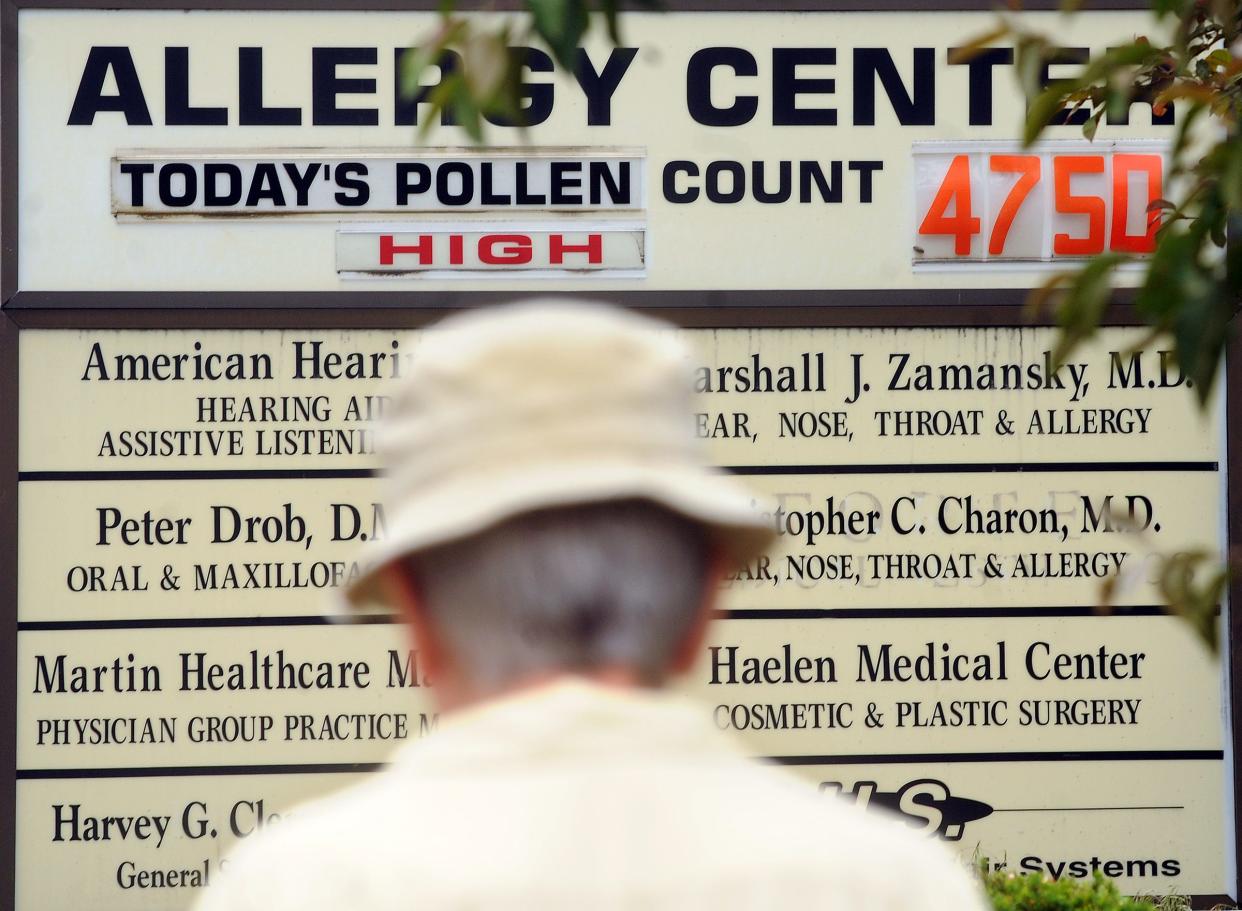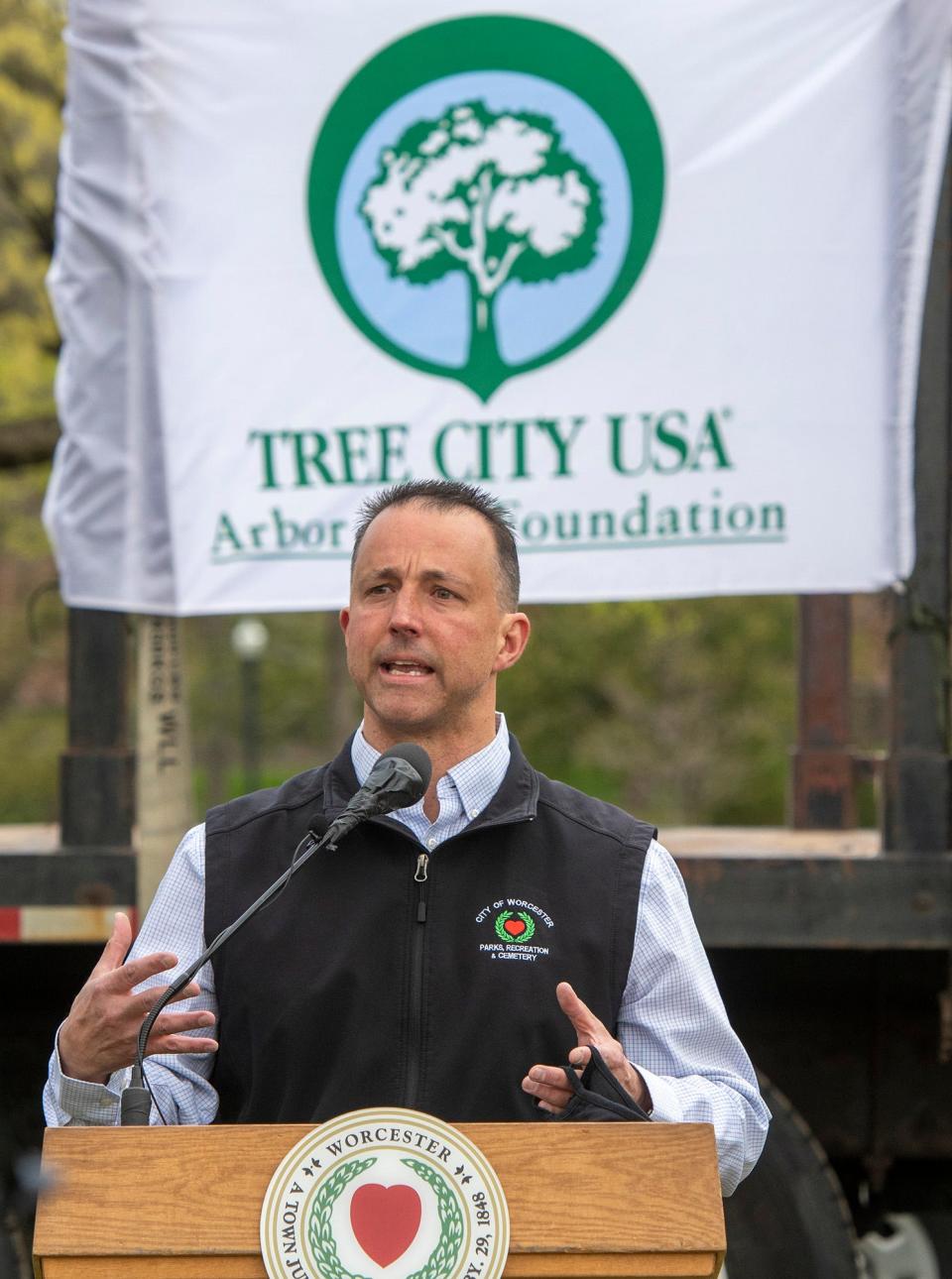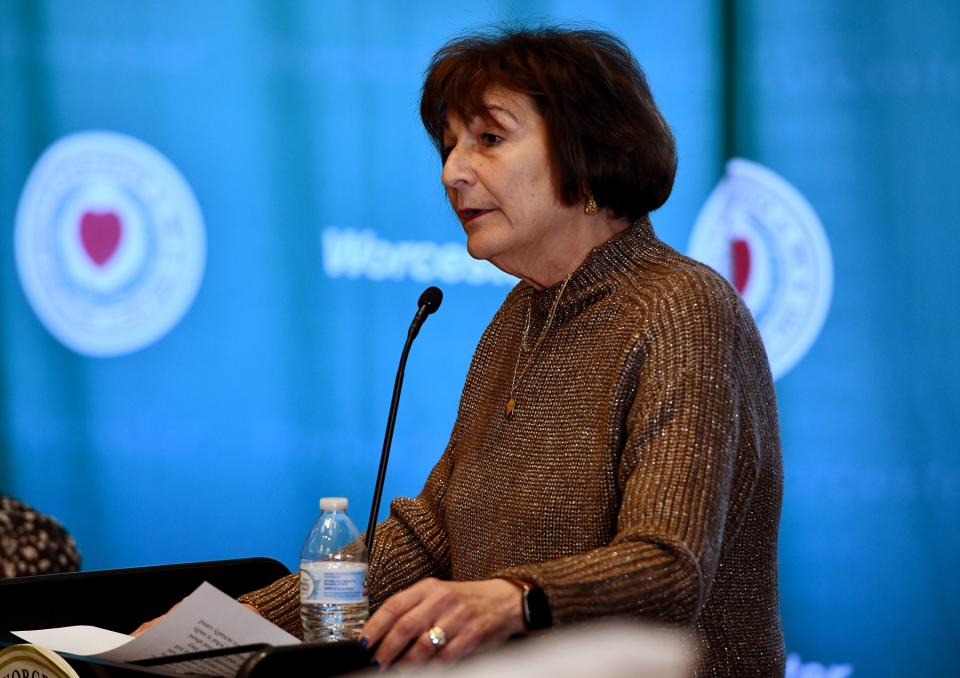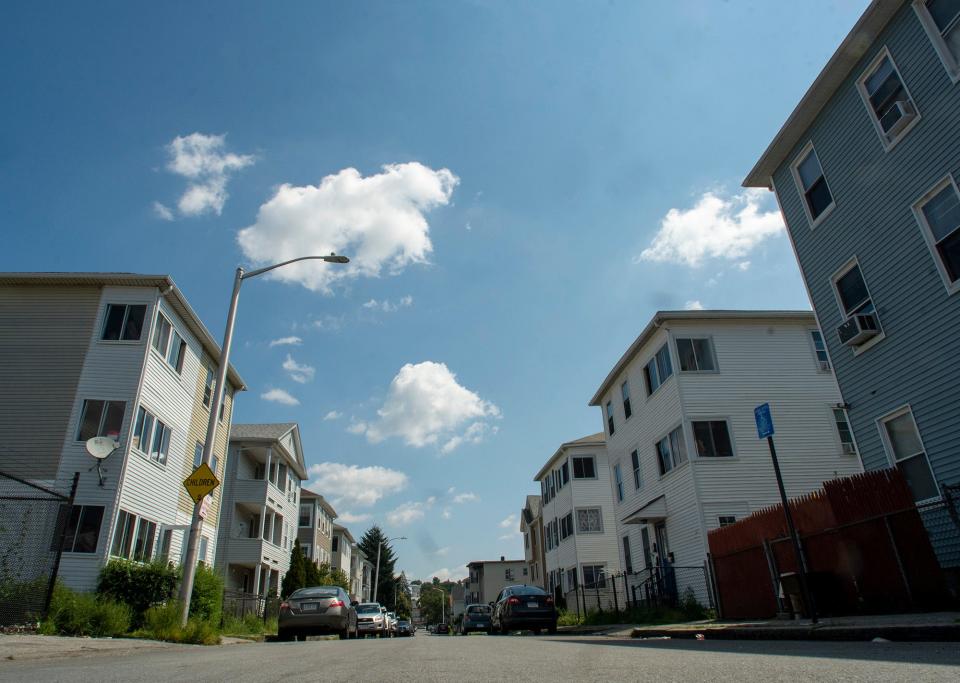Why is Worcester such a tough city for allergy sufferers?

WORCESTER — Do you have watery eyes, runny nose or scratchy throat? How about all three?
If so, you may have a seasonal allergy, and if you live in Worcester, you’re not alone.
A recently released report ranks Worcester the 27th most challenging place to live with allergies among the top 100 metropolitan statistical areas in the contiguous United States.
Worcester’s overall grade is in a worse-than-average category, according to the report's author, the Asthma and Allergy Foundation of America. Other Massachusetts cities that made the list include Springfield, at 34, and Boston, at 55. Wichita, Kansas, tops the list as the worst city for allergy sufferers; Buffalo, New York, is considered the least challenging.
Worcester’s ranking is connected to a number of factors, including grass and weed pollen, the growing threat of climate change and a lack of board-certified allergists/immunologists to treat patients.
Worst ranking
Worcester’s worst ranking was for grass pollen, for which the city stands 11th-worst nationally.
Several grasses that cause allergies include Kentucky blue, rye and fescue, and Worcester uses some of them on city-owned athletic fields and open spaces.
Those cool-season grasses are a must, because they can survive New England’s cool weather.
“We can’t bring warm-season grass from the South up here. The grass doesn’t survive, it can’t withstand weather conditions in the Northeast,” said Rob Antonelli, the city’s assistant commissioner of parks and recreation, who marks his 25th year in the role next month.

As for weed pollen, where Worcester holds the 36th spot nationally, Antonelli said the city does its best to manage weeds on athletic fields. Work on open spaces is limited, confined to cutting grass to a level that hopefully limits weed growth.
More fruit trees?
The report suggested urban planners include more trees in their designs that bear fruits, nuts and seeds to limit pollen levels.
Currently, many cities plant wind-pollinating trees that do what the name suggests: They produce pollen that blows in the wind, a literal headache for allergy sufferers. The report links wind-pollinating trees to 21% more pollen since 1990.
Of the nearly 20 tree “culprits” in the report most common for pollen, oak is the only one in the city’s tree planting program this spring, said Antonelli. Worcester does plant wind-pollinating trees, including London planetree, linden, locust, Japanese zelkova, Sargent's cherry and tuliptree, but they’re not on the report’s culprit list.
Fruit trees are avoided in the public right of way because while biting into an apple or pear can bring a smile to one’s face, the fruits that fall on sidewalks and roads can be a nuisance for pedestrians and motorists. The only seed-bearing fruit in the city’s planting inventory is the mighty oak.
“What we’re looking to do is stay away from (fruit trees), and we’ve gone more with just planting trees that leaf and lose their leaves in the fall,” said Antonelli.
Climate change threat
Warmer temperatures and higher levels of carbon dioxide connected to climate change result in longer growing seasons and more pollen, the report said.
It cited research by the National Academy of Sciences and Climate Central, an independent group of scientists, that showed pollen season starts 20 days earlier and last 10 days longer, compared to three decades ago. The outcome is more pollen and allergies.
Additional research links higher pollen levels to asthma, a particular concern of Dr. Matilde Castiel, commissioner of Worcester’s Department of Health and Human Services.
Worcester ranked 11th nationally for the most-challenging places to live with asthma, including prevalence, death rate and number of emergency room visits, according to a 2021 study by the Asthma and Allergy Foundation of America. A city spokesman said asthma numbers aren’t immediately available.
Worcester's national asthma ranking improved in 2022, as it dropped down the list to the 63rd spot.

“My biggest piece is thinking about where this happens most, in communities of color,” said Castiel when speaking of asthma, pollen and other public health concerns. She noted a high concentration of facilities like car repair shops and train terminals located in disadvantaged parts of the city that contribute to poor air quality and higher rates of asthma and allergies.
“(Residents in those communities) don’t have a voice to say what they don’t want in their neighborhood. It’s our job to protect them, and make the environment safe for them,” said Castiel.
Urban heat island
Within the scope of climate change presented in the report, a so-called urban heat island is mentioned.
It’s no secret that Worcester has these heat islands in its inner core, neighborhoods where there’s a lack of trees and an abundance of concrete that result in extreme heat in the summer and poor air quality.
A recent consultant’s report named the Green Island neighborhood, which includes Polar Park and surrounding residential and commercial areas, as an extreme hot spot where recorded temperatures are 10 degrees higher on certain summer days, compared to other parts of the city. Earlier studies by Clark University students also showed the heat disparity.

Urban heat islands can also increase allergy sensitivity, according to the Asthma and Allergy Foundation of America. Carbon dioxide from cars and trucks, power plants and industry can impact pollen production in these neighborhoods.
Research published in the Journal of Allergy and Clinical Immunology found ragweed pollen could be seven times higher in a city that averaged 3.6 degrees Fahrenheit warmer and had 30% more carbon dioxide than the rural areas surrounding the city.
Worcester's Achilles' heel?
What could account for Worcester’s 27th-worst ranking is its score for the number of board-certified allergists/immunologists for each patient.
Worcester received a grade of less than average for this category, while earning a grade of average for the categories of all pollen types and medicine use – the level of over-the-counter sinus and allergy medication sales per patient.
Dr. Andrew Karson, chief medical officer at UMass Memorial Medical Center, agreed with the finding.

“Board-certified allergists are hard to come by” in Central Massachusetts, said Karson, who noted that many allergists in the area are pulmonary doctors with a special interest in allergy.
That is the case at UMass Memorial, where 15 such doctors fall in that category, said Karson. But that doesn’t mean patients aren’t getting quality care. Karson explained that, in many cases, primary care doctors are the first line of defense against allergies. If a condition requires advanced care, the patient is referred to a pulmonologist or ear, nose and throat doctor.
Takeaways
Antonelli, Karson and Castiel offered potential next steps Worcester could take to lessen allergy risk.
Antonelli said City Hall will "definitely" look at the report and “see where we can assist.” But Antonelli threw in a caveat – Worcester was built on seven hills, and hills naturally come with wind that blows pollen around. Not to mention areas surrounding Worcester that blow pollen into the city.
“I live near the (Worcester Regional) airport, and it gets wind from the Paxton side. (Allergies) are not just a Worcester thing," he said.
Karson believes it may be time to review the city’s supply of board-certified allergists and think of ways to potentially increase the numbers. However, he noted that Worcester has enough primary care doctors and pulmonologists to serve the community.
Castiel advocates for more trees to cool off heat islands in Worcester, plus efforts to educate residents about taking precautions to protect themselves against allergies. Those include wearing a face mask, washing clothes and bedding to free them of pollen, wash pets if they’ve been outside because they can spread pollens, and vacuuming carpets.
Contact Henry Schwan at henry.schwan@telegram.com. Follow him on Twitter @henrytelegram
This article originally appeared on Telegram & Gazette: Worcester in top 30 nationally for most-challenging for allergies

